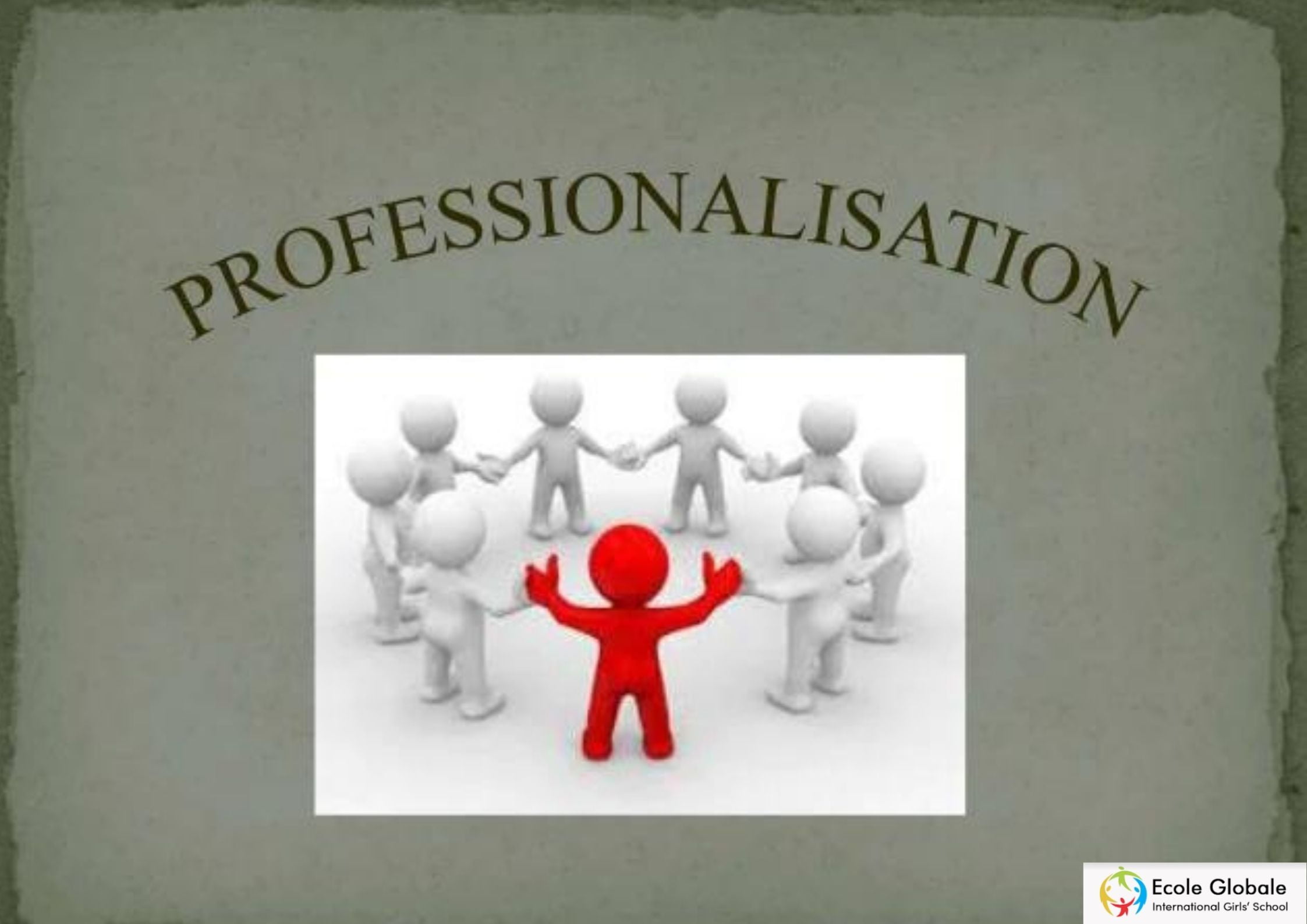Professionalization portrays the (a) education, training, and different exercises that transform a worker into a professional and (b) the social procedures by which an occupation turns into a profession. Professionalization is a social procedure by which any trade or profession changes itself into a genuine “profession of the most noteworthy uprightness and competence.” The meaning of what constitutes a profession is frequently challenged. Professionalization will result in general outcome in setting up satisfactory capabilities, at least one expert association to prescribe the best practice and to administer the behavior to the members of the profession, and some level of the outline of the certified from unqualified beginners. It is additionally prone to make “word-related closure,” shutting the domain to entry from outsiders, novices, and the inadequate. Occupations not fully professionalized are sometimes referred to as semi professions.
Professionalization can be a bottom-up process by those in the occupation, a top-down approach by employers or the government (as an employer or as a policymaker), or a blend of the two. For a business employer, Professionalization might mean requiring a specific course of academic study, degree, certification, or professional society membership as a criterion of initial and/or continuing employment. For a professional association, Professionalization might mean setting up a code of conduct or creating certifications, training programs, or educational norms. For the administration, Professionalization might mean encouraging or requiring a particular academic accomplishment or credentials for its own workforce, supporting the development of educational plans, building standards for training programs, encouraging the utilization of certification as a means of managing the workers whose employments influence the well being and security or property of others, or requiring (at either government or state level) licensure for specific occupations.
What are the goals for Professionalization?
Traditionally, Professionalization has had one or more of the following goals:
- to set up norms and improve the nature of the workforce;
- to regulate workers whose occupation can influence the wellbeing, safety, or property of others;
- to upgrade public trust and confidence;
- to empower compliance with administrative or legal necessities;
- to elevate the status of an occupation;
- to set up a monopoly or else direct the supply of labor to propel the interests of its members;
- to guide the conduct of specialists in the field, particularly with regards to morally or ethically ambiguous activities;
- to establish and standardize roles (and the associated knowledge, skills, aptitudes, and abilities) and pathways so as to readily adjust supply and demand, enhance awareness of career paths, and facilitate recruitment and maintenance by employers.
An extra, regularly implicit yet significant objective is to build up a mutual arrangement of qualities, culture, ethos, and outlook for a profession.
Now, let’s have a look at specific mechanisms for Professionalization and how they affect the capacity and capability of the workforce.
Code of Conduct or Ethics
A code of conduct or ethics is one of the primary mechanisms for Professionalization. Implicit rules or morals fall into two types: (a) enforceable regulations whose breach can lead to the renouncement of a certification/accreditation or even expulsion from the profession, and (b) non-enforceable codes that are generally connected with enrollment in a professional/expert society.
Certificates and Certifications
Certificates are associated with training or education courses and confirm thorough examination that specific content was learned in the educational curriculum. They are by and large “useful forever” and cannot be repudiated. They serve as a sign of knowledge at a specific point in time. Certification/Accreditation is a formal procedure by an authorized body. It is based on a study of the factors that foresee success in a job and relies on examinations that fulfill specific guidelines. Certifications are time-limited and require periodic recertification.
A challenge related to updating a certification is that it takes time to arrive at an agreement on the knowledge and skills to be evaluated. One risk is obsolescence—the experience or skills tested to become obsolete by the time the certification is issued. Another chance is ossification—when the foundation of a standard hinders the advancement of aptitude on the grounds that those ensured may not be boosted to learn beyond what was included in the last certification test. These challenges can be addressed by focusing assessments as much as possible on fundamental concepts, adopting deft procedures for updating content and requiring regular recertification. Continuous education is especially important, both with regards to certifications and more extensively for the workforce.
Licensure
Licensure includes an administration limitation on training without a permit, by and large including open wellbeing or trust. It might set up principles for legal obligation on account of careless practice. Thus, it acts as a useful tool to implement Professionalization in any firm.
Professionalizing in any industry advances the profession as a whole and goes a long way to create better opportunities for success. It also has a significant impact on attracting more talented people to work and retaining the highest performers, which makes a win-win situation for employees and employers.






